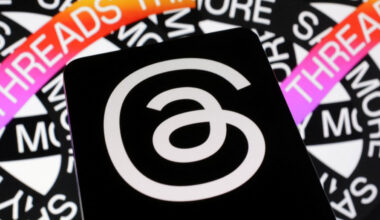Last year, Netflix and Stranger Things took the world by storm when the first season took binge-watchers to the 1980s small-town Indiana and introduced them to a Stand By Me-esque band of kids who get wrapped up in the supernatural and a shady cover-up by secretive government agents.
Currently, Stranger Things has a grasp on our culture like few pieces of entertainment ever do. Sure, much of its popularity is thanks to incredible performances, top-notch writing, great special effects, and a highly engaging story. But also deserving credit is Netflix’s innovative and wide-ranging approach to marketing the show to consumers.
The lessons advertisers and brands can take away from Netflix’s marketing strategies are indeed numerous. And the simple idea of using the show’s popularity as a means to boost one’s own brand should not be missed. In fact, just mentioning Stranger Things in a branded email’s subject line increased consumer engagement by 74 percent.
Here’s what brands and advertisers can learn from Netflix’s Stranger Things

Interactive marketing breeds engagement
Perhaps the main lesson that marketers can learn from Stranger Things is that interactive ads are far and away the most engaging. Not only this, consumers who see interactive ads appreciate them more and are less turned off compared to more traditional marketing.
Take for instance Stranger Things and Lyft’s innovative collaboration in anticipation of season two. The marketing stunt let ride-sharers nationwide opt-in to a version of the Lyft map that transformed the cars into waffles, Christmas lights, trucker hats, and tiny Stranger Things logos. Lyft users in Philadelphia and Los Angeles could take Stranger Things-themed rides that featured malfunctioning seats, flickering lights, radio static, a driver who vomits a slug in front of you, and, of course, an Eggo reward at the end. In this case, this was a win for both brands as Lyft achieved more riders looking for a taste of the show and the show saw increased buzz.
The show’s interactive marketing antics didn’t stop their either. There was also a 360-degree virtual reality experience of the Christmas light-strung house from the show and an 8-bit Stranger Things video game.
Cross-promotion wins the day
Like the Lyft team-up mentioned above, Netflix and Stranger Things used cross-promotion as a massive tool in building hype around the show’s second season release. By far the most recognizable cross-promotion was their $5 million Super Bowl ad they put together with Eggo, a brand now synonymous with the show due to Eleven’s obsession with the frozen waffles. Stranger Things and Eggo also teamed up for branded spoiler blocker, recipes tied to every episode, DIY waffle box Halloween costumes, and an Eggo waffle truck at the Stranger Things season two premiere. Even though Eggo wasn’t initially involved with the product placement in the Stranger Things, they’ve taken full advantage of the hype surrounding the show. Stranger Things and Spotify also joined up for another notable collaboration that involved 1980s-themed music playlists for each character.
Word-of-mouth still reigns supreme
Long before Stranger Things had a marketing budget to pair up with Eggo for a Super Bowl ad, the hit show relied heavily on the oldest form of marketing, word-of-mouth. In fact, advertising for the show before the season one debut was scant. But after premiering, the show achieved massive consumer to consumer marketing because, put simply, it was a unique, compelling product that wowed audiences who Tweeted and shared it in droves. And when you boil it down, creating a high-quality and interesting product is the main route to boosting word-of-mouth advertising. And in the internet age, when you add a fascinating product to the digital conscious, it can spread like wildfire.
Nostalgia sells
There is something innate in humans that make us yearn for things that bring us back to our younger years. And Stranger Things nailed this because it activated the nostalgia in all the 80s kids out there who miss the feeling of films and culture from their childhood. Indeed, if you ask anyone what Stranger Things reminds them of, they’ll give you a hundred different answers from the 1980s like E.T. and IT to The Goonies and The Thing. When you combine that with a distinct 80s soundtrack, it’s no wonder Stranger Things is the craze among many millennials who were born in the decade. A wise move considering millennials make up a quarter of and the largest generation portion of the US population with a purchasing power of $200 billion. And according to a study done by the Journal of Consumer Research, people spend more money when they are feeling nostalgic.
Stay social
Stranger Things clearly knows the value of constant and consistent interaction on social media in marketing to consumers. In anticipation of season one, the show organized a four-hour long Twitch livestream called “Twitch Plays Haunted Basement.” The broadcast consisted of small and medium influencers playing video games on a Stranger Things set while being scared by flying books, flickering lights, creepy dolls, and randomly slamming shut doors. At the end, viewers were shown the first 8 minutes of the premiere episode.
Stranger Things also excels on social media by posting interesting content that gives fans more details on the lore of the show or hints at what is to come. The show also pushes out catchy hashtags and all the major cast members also stay very active.
Overall, brands who look at Stranger Things and Netflix’s impressive marketing should note the multi-pronged, successful approach that embraced hot trends and utilized engaging social and interactive content.
